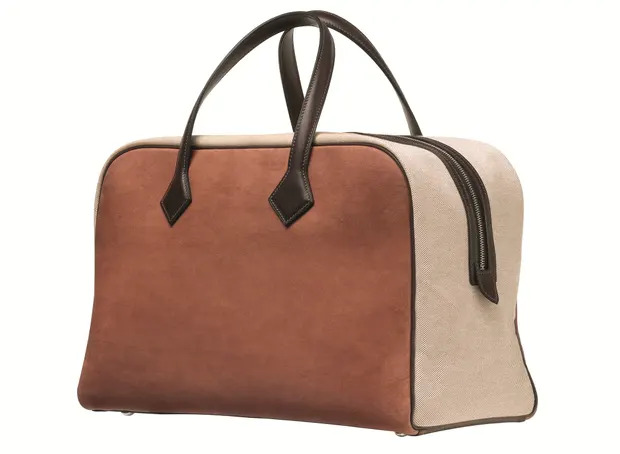Most attempts to make the fashion production process more environmentally friendly have hinged on tweaking the current way of doing things, but what sort of difference would it make if we were to rethink them entirely? What if, rather than relying on rhizomatic production chains, we figured out a way to grow our clothes from scratch? Well, thanks to some groundbreaking materials scientists out there, that sci-fi vision isn’t actually too far from being a reality! Yes, rather than woven textiles, major industry players are increasingly recognising the benefits of working with lab-grown biomaterials – a solution that takes steps towards correcting fashion’s shameful track record regarding ecological and ethical responsibility, whilst also satiating our ravenous appetite for new garms.
But what even are biomaterials? And how are they any better than fabrics derived from raw materials plucked from the earth? Well, while textiles like cotton and wool fall under the biomaterials banner – which encompasses “any material that has at least 25% of the makeup derived from renewable biomass”, according to the USDA – here, we’re talking about fabrics that are either created by way of living cells, or by using renewable biomass during the production processes – think castor bean-derived nylons and synthetic spider silks.
Perhaps the buzziest material out there right now, though, is bio-based leather. Indeed, what makes one of fashion’s best-loved luxury materials a particularly good candidate for bio-replacement are the ethical and ecological quandaries tied to its consumption. While leather is typically thought of as a byproduct of the meat industry, it’s nonetheless estimated that current rising demand for leather goods will result in the slaughter of 430 million cows by 2025. There’s also the astonishing environmental footprint of bovine agriculture to account for, with livestock rearing contributing an estimated 14.5% of annual CO2 emissions. And the fact that chromium – a chemical used in the lion’s share of industrial tanning processes – has long since been proven to have a dramatically negative effect on the health of leather workers and those in the surrounding communities, with effluents frequently dumped in nearby water sources.

While vegan leather alternatives have abounded in recent years, they’re often problematic in their own right, given that most are created using non-biodegradable plastics. If you’ve had your ear to the ground over the past year or so, though, you’ll have likely heard of mushroom leather – a fabric that it wouldn’t be unfair to dub fashion’s current hero material. Grown in precisely controlled environments, the vegan textile is the product of mycelium – the underground root network of fungi – and can be produced in just a matter of days, as opposed to the months, if not years, it takes to raise livestock for slaughter. Fed with sawdust, the large sheets of mushroom that grow as a result are then processed into a durable leather-like material, which can be put to use in almost all the same ways as real hide.
So convincing are the end results that they’ve drawn the attention of some of the biggest players in the industry. In 2020, it was announced that Bolt Threads – a Californian materials solutions company, the manufacturer of of Mylo™, one of the most advanced developed mycelium leather alternatives – had received a significant investment package from a consortium of brands including Adidas, Lululemon, Stella McCartney and the Kering group; with the first products resulting from the partnership hitting shop floors last year. And then there was the announcement from Hermès – perhaps the apex luxury leather brand – that they had entered into a partnership with biomaterials company MycoWorks to create a mycelium leather version of its Victoria shopping bag.

Of course, though it’s perhaps the most developed, lab gown leather isn’t the only biomaterial solution out there. Back in 2019, Adidas x Stella McCartney revealed a dress created using a vegan spider silk – essentially a fibre that replicated the exact proteins of the silk of a type of orb-weaver spider – again created in collaboration with Bolt Threads. Elsewhere, New York label Public School, in collaboration with material scientist Dr Thianne Schiros, managed to create a biodegradable sneaker predominantly using a culture of bacteria and yeast; Yeezy’s iconic Foam Runner was created using an algae-containing foam; and just last week, Fendi announced that it had linked up with CSM and Imperial College London to develop lab-grown alternatives to fur fibres.
While we may not quite be at the point where the entire industry can rely on the use of such materials, to call the results we’ve seen in the development of biomaterials in recent years impressive is to sell it short. Question marks may linger over how readily consumers will take to these innovative new textiles, but the truth in the matter remains that – faced with the existential crises that await us if we carry on ‘as normal’ – the choice between sticking to familiar yet harmful norms and changing tack is a no brainer. It may all seem pretty experimental right now, but trust us when we say that lab-grown clothes truly are fashion’s future.
Follow i-D on Instagram and TikTok for more sustainability content.


